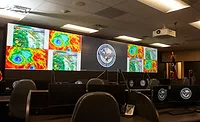How Effective Are Existing University Emergency Operations Plans?
Eighty-six percent of respondents in the Margolis Healy Campus Safety Survey 2015indicated that their university has developed an emergency operations plan that addresses threats specific to their institution. However, only 54.7 percent said their university had conducted a comprehensive hazard and vulnerability assessment, which is often instrumental in developing an effective all-hazards emergency operations plan. More than a quarter of employees surveyed said their university had never conducted an active shooter exercise, either tabletop, functional or full-scale. Thirty-one percent of participants said their institution has no staff dedicated to emergency preparedness efforts. In two-year institutions, that rate increases to 41.2 percent.
Less than half of respondents acknowledged that their institution conducts routine post-event meetings with emergency preparedness personnel to evaluate current plans, assess and address changes, or discuss other potential gaps in preparedness.
Over 60 percent of respondents do not believe their institution has the appropriate security staffing levels (including a mix of staffing, such as sworn, non-sworn, contract security, proprietary security and dispatch) to meet its public safety needs.
Perceptions of public safety on campus can vary widely between campus safety officials, leadership such as provosts, and key campus staff like general counsel or student affairs. For example, when it comes to social media monitoring, the survey shows that 64.2 percent of universities are monitoring publicly available social media networks on or around their campuses, but 75.6 percent of leadership may believe (possibly erroneously) that social media monitoring is occurring on their campus, while only 45.8 percent of key campus staff believe their university is monitoring social media.
Looking for a reprint of this article?
From high-res PDFs to custom plaques, order your copy today!







